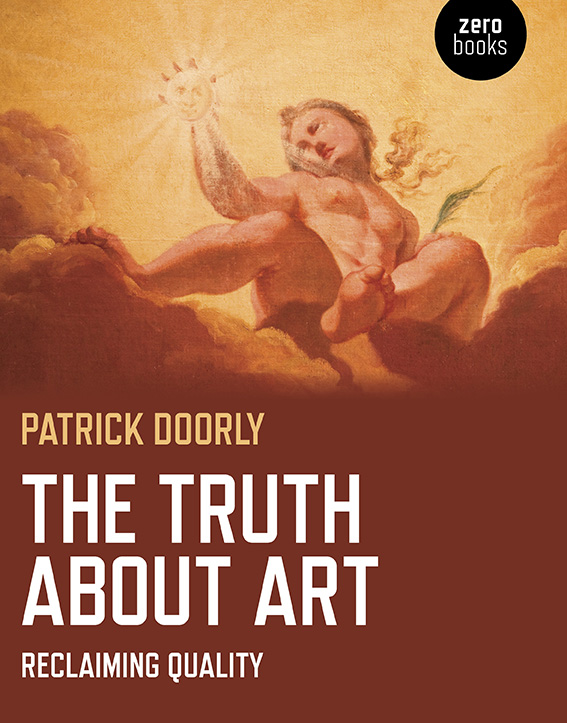Truth about Art, The
The book traces the multiple meanings of art to their various sources, and equips the reader to choose between them.

The book traces the multiple meanings of art to their various sources, and equips the reader to choose between them.
The book traces the multiple meanings of art to their various sources, and equips the reader to choose between them.
Aesthetics, Art (general), History (general)
‘Both knowledge and truth are beautiful things, but the Good is other and more beautiful than they.’ — Plato, Republic, 508e. This book traces the multiple meanings of art back to their historical roots, and equips the reader to choose between them. Art with a capital A turns out to be an invention of German Romantic philosophers, who endowed their creation with the attributes of genius, originality, rule breaking, and self-expression, directed by the spirit of the age. Recovering the problems that these attributes were devised to solve dispels many of the obscurities and contradictions that accompany them. What artists have always sought is excellence, and they become artists in so far as they achieve it. Quality was the supreme value in Renaissance Italy, and in early Greece it offered mortals glimpses of the divine. Today art historians avoid references to beauty or Quality, since neither is objective or definable, the boundaries beyond which scholars dare not roam. In reality subject and object are united and dissolved in the Quality event, which forms the bow wave of culture, leaving patterns of value and meaning in its wake.
Click on the circles below to see more reviews
E H Gombrich and Robert Pirsig might seem as unlikely bedfellows as the hobby-horse and the motorcycle of which they wrote, yet in Patrick Doorly’s meticulous and lucid quest for the Truth about Art they stand side by side as the two lone providers of insight. Over the course of a journey of exploration ranging from Plato to Marcel Duchamp, and encompassing not just the visual arts but philosophy and literature, their shared, though very differently expressed, conviction of the importance of tradition and of excellence is constantly held before the reader as the key to a proper understanding of the intellectual structures that have been superimposed on artistic creation by generations of philosophers, critics and historians of art. The message that Doorly seeks to drive home, sometimes with almost missionary zeal, is that Art and Truth are not facts of nature but constructs with a cultural legacy, and that the word ‘art’ in particular has throughout its history had changing meanings attached to it. His aim is systematically to question, from first principles and without preconceived ideas, what it is that distinguishes art from artefact or object. His approach to the half-jocular question “but is it Art?” is deeply serious, and impatient of orthodoxies, whether those of Kant or Winckelmann or of more recent critical theory; he has a sharp eye for flawed argument, and takes a slightly schoolmasterly delight in leading his class through the basic facts, the etymologies and semantics, the evolution of ideas, so as to lay bare a long history of misapprehension. The fundamental hypothesis that he proposes and proceeds to test is that art is ‘high quality endeavour’ (a hypothesis that tellingly only fails when confronted with what he calls the ‘intellectual pranks’ of Duchamp), aiming to show that significant artists have at all times sought to achieve excellence by building on and improving or transcending the tradition that they have inherited. Doorly concludes that Quality is of the essence, and that Pirsig’s model of the interaction between the Dynamic Quality of the creative individual and the Static Patterns of a culture is the most promising conceptual model of artistic endeavour that he has encountered. Readers who delight in the works of artists of all periods (other than the professionals of the art and art-historical worlds, who may well not welcome this book on account of its uncomfortable home truths) will find Doorly’s systematic demystification of the critical apparatus surrounding these works enlightening. The obvious integrity of his enquiry and the clarity with which it is conducted enrich our ability to understand what it is that delights us, and give a further dimension to our appreciation of the creative process. ~ Nicholas Mann, Director of the Warburg Institute (1990–2001)
Readers and admirers of E.H. Gombrich’s The Story of Art will be grateful for this book. It explores the idea of artistic quality, which is not a phantom but a reality. Debates about quality have a long and complex history, through which Doorly guides the attentive reader. As it says on the cover, this book reclaims quality in art. ~ Richard Woodfield, editor of The Essential Gombrich
Doorly has written a book that is full of interest, and he presents his thesis in language that sparkles with clarity. I am in broad agreement with his treatment of the Italian Renaissance, and with his views of virtue, quality, and related topics. In areas where I have no expertise, I learned a lot about artistic creation from his ideas and from the conclusions he draws from an enormous amount of essential reading. The book deserves to be widely read. ~ John Woodhouse, Fiat-Serena Professor Emeritus of Italian, Oxford University